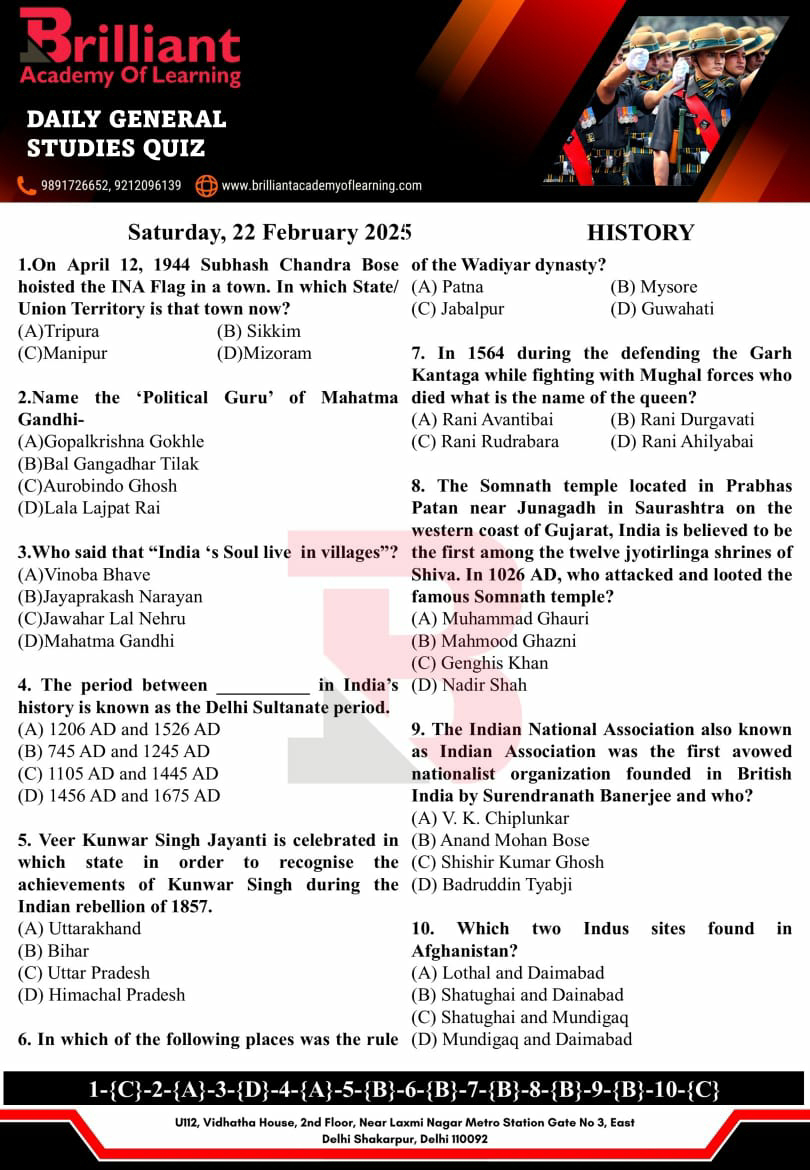Ancient Indian History (Paleolithic Period) For SSC NDA CDS RRB Civil Services General Competitions - By Nibha Mishra @Brilliant Academy of Learning, Laxmi Nagar, Delhi .Call 9891726652/9212096139
2. From their first appearance to around 3000 BC, humans used only stone tools for different purposes. This period is therefore called Stone Age
3. Stone age has been divided into three ages called 1.Paleolithic Age ( old stone age) 2. Mesolithic Age ( middle stone age)
3. Neolithic Age ( new stone age).
4. The Paleolithic age dates back to 500,000 BC - 10,000 BC
5. The people of this age were food gathering people.
6.They lived on hunting and gathering wild fruits.
7.Their tools were unpolished,udressed,rough stones.
8. They lived in caves and rock shelters.
9.They had no knowledge of agriculture, fire and pottery.
10. They are called ' Quartzite Men' because their tools ( axes, cleavers, choppers, blades etc.) were made of hard rock called quartzite.
11. It has been said that Paleolithic men belonged to the Negrito race.
12. According to the nature of stone tools used by the people and also according to the nature of change in the climate Paleolithic age in India has been divided into three phases.
1. Early Paleolithic Age - It covers the greater part of Ice age. Cleavers, axe and choppers have been found in the Belan valley of Mirzapur district of Uttar Pradesh. Such tools are also found in and Sohan river valley which is in Pakistan now. Climate in this period became less humid.
2. Middle Paleolithic age
This period is characterized by the use of stone tools made of flakes like scrapper, borers and blade like tools.
The sites are found in the valleys of Tungbhadra, Narmada and Son.
3. Upper Paleolithic age
In this period burins and scrappers were used .
Such tools are found in Maharashtra, Karnataka, Bhopal, Chhotanagpur, Andhra Pradesh.The climate is believed to be warm and less humid.
13. The Mesolithic age dates back to 10,000 BC to 7000BC
14. In this age, climate believed to be warm and dry. Due to climate change flora and fauna was also changed which made human being to move to new area. Since then major climate change has not been perceived.
15. The people lived on food gathering, hunting and fishing.
16. They domesticated animals.
17. The tools of this period was pointed, scrappers , cresconic blades so is called Microliths.
18 During the last phase of this period plane cultivation began.
19. Mesolithic sites are found in central India, South of Krishna river, in the region of Chhota nagpur
20. In the Narmada valley and the Belan valley of Vindhyas all the three phases of the Paleolithic, the Mesolithic and the Neolithic in sequenc are found.
21. The Neolithic age is 7000BC to 2500 BC.
22. In some places of India like in the South and in the eastern part it is as late as1000BC.
23. Neolithic men cultivated land to grow
fruits and corn like horse gram and ragi.
24. They domesticated animals like dog goat, sheep and cattle.
25. As far as their tools are concerned they people implemented stone tools other than quartzite which were more lethal, more polished and more finished.
26. They knew about making fire and making pottery first by hand then by potters wheels.
27. They painted and decorated their pottery.
28. They lived in caves.
29. They decorated their caves with dancing and hunting scenes.
30. They knew the art of making boats.
31. They knew how to make clothes by weaving cotton and wool.
32. In the later phase of this period people led a more settled life.
33. They lived in circular and
rectangular houses made of mud and reed.
34. There are many important sites of this age like Burzahom in( Jammu and Kashmir ) has evidence of cremating pet dog with man.
35. Gufkral in J & K has evidence of pit dwelling, graveyard in house and stone tools.
36. Maski, Brahmgiri ,Tekkalakota ,Piklihal and Hallur in Karnataka.
37. Paiyampati in Tamilnadu.
38. Garo hills in Meghalaya.
39. Chirand and Senuar in Bihar. Here bone tools were found.
40. Amri ,Kot Diji which are in Pakistan now.
41. In Uttar Pradesh, at Koldihawa sites suggested a three fold cultural sequence
42. These three sequences are Neolithic, Chalcolithic and Iron age.



This comment has been removed by the author.
ReplyDelete